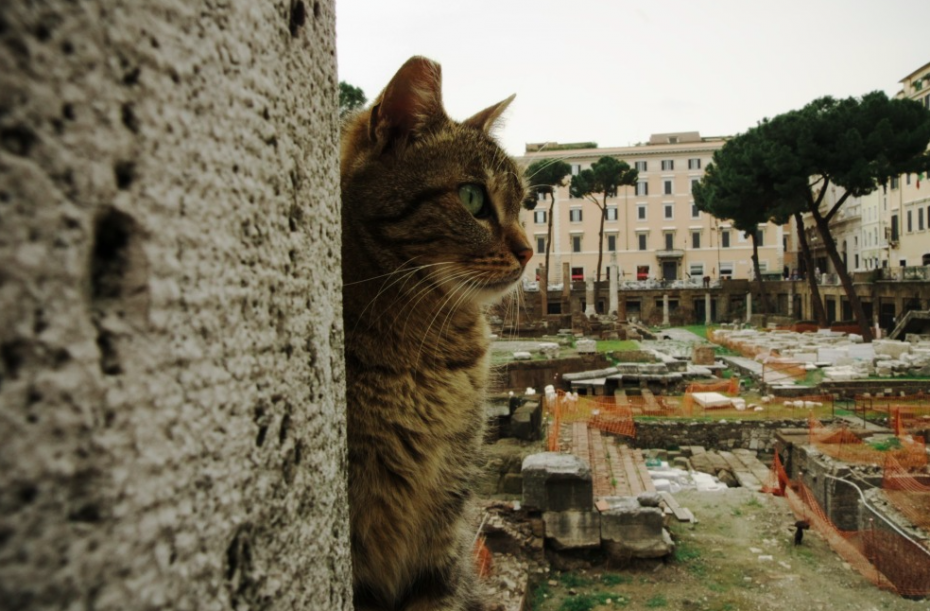The grey Roman skies overhead unleashed a torrent of rain as I reached Torre Argentina near the Pantheon. Dashing across the street for cover underneath a red awning, I bought the first umbrella that a passing vendor handed me. I watched as large pellets of rain hit the surface and bounced upward. Miserable weather. Fortunately, the squall was short-lived and I was soon crossing the street again.
I had come to see the cats of Rome who have called Torre Argentina their home since it was excavated in 1929. The below-street level block contains some of Rome’s earliest temples. Among them are a part of the Theater of Pompey where Julius Caesar was murdered in 44 BC.
The cats are mostly feral. They prowl around the ancient ruins as though they owned them and answer only to the Gattara, or “Cat Women” of Rome who come to feed them during lean times. Gazing downward to the wet grass and dampened stones, I soon began to see cats creep out from under hiding places that had given them shelter from the rain. At one corner, a gate with a staircase lead down to the underground cat sanctuary.
The sanctuary began as a cave-like excavated area under the street that served as a shelter for the cats at night and a place to store food. For a long while there was no running water or electricity. A big gas lantern was placed on a table that cast shadows of the cats on the cave walls and created a spooky atmosphere.
Inside the sanctuary today are large rooms painted white. Cages line some of the walls with cats under medical supervision. All of the 200 cats are up for adoption. Most of the permanent cats have special needs like blindness or missing a limb. The volunteers show a great love for these cats and are very interactive in finding them safe and loving homes.
There are estimated to be about 2000 cat colonies (local groupings of feral cats) in Rome. The city council of Rome protects the cats living among the ancient ruins of the Colosseum, the Forum and Torre Argentina as part of the city’s bio-heritage.
James Martin in his article, Rome Cats, explains that “not everyone in Rome, of course, holds a fondness in their hearts for their neighborhood Gattara (cat women), or for the cats, but it hardly matters to the healthier ones, who augment their meals outside the finest of Rome’s eateries. In summer there are pigeons, mice and lizards to be had in the excavations and nearby fields as well. (In antiquity, the cat was highly valued for just this activity–defending mankind against rodent borne diseases like the plague.”
All of the abandoned cats are spayed, neutered and vaccinated. The sanctuary is operated by an international group of volunteers who welcome visitors and give free tours of the premise. Donations from tourists, fund-raising projects and the sanctuary store keep the shelter running. It is kept very clean with every small box and cat bed occupied by a curled up feline.
The Torre Argentina Cat Sanctuary is open 7 days a week from noon until 6pm. Only a 5 min. walk from the Pantheon. Entrance is free. So is the love.






























